In the ever-evolving digital landscape, the success of a website hinges on more than just attractive design and engaging content. It’s about creating an online experience that resonates with your audience, drives conversions, and outperforms the competition. This is where A/B testing becomes an indispensable tool. In this post, let us delve into the details of A/B testing to help you optimize your website effectively.
A/B testing, at its core, is a method to compare two versions of a web page to see which one performs better. It’s not just about changing a color here or a font size there; it’s a systematic approach to understanding user behavior and making data-driven decisions.
Why Consider A/B Testing?
- Improved User Engagement: By testing different elements of your website, you can determine what resonates best with your audience, leading to increased engagement.
- Data-Driven Decisions: A/B testing provides concrete data, removing guesswork and allowing for informed decision-making.
- Increased Conversion Rates: Small changes can significantly impact user behavior, and A/B testing helps identify changes that increase conversions.
- Reduced Bounce Rates: By optimizing the user experience, A/B testing can decrease the number of visitors who leave your site quickly.
- Risk Mitigation: Test changes on a portion of your audience to gauge reactions before a full rollout, reducing potential risks.
- Personalization: Tailor experiences to different user segments, improving satisfaction and loyalty.
Key strategies to conduct successful A/B tests:
- Understanding Your Audience: Learn to align your testing strategy with user expectations and behavior.
- Defining Clear Objectives: We emphasize the importance of setting specific, measurable, achievable, relevant, and time-bound (SMART) objectives for each test.
- Choosing the Right Elements to Test: From call-to-action buttons to headlines, images, and page layouts, we guide you on what elements to test for maximum impact.
- Creating a Hypothesis: Develop a hypothesis based on data and insights and use it to predict the outcome of your test.
- Implementing the Test: Create a variation based on your hypothesis, and A/B test it against the base version. A variation is another version of your current version with changes that you want to test. You can test multiple variations against the control to see which one works best.
- Run test: Kick off the test and wait for the stipulated time for achieving statistically significant results.
- Analyzing Test Results and deploy changes: Learn how to interpret the data to make informed decisions. If the test succeeds, deploy the winning variation.
- Continuous Improvement: Understand that A/B testing is an ongoing process, not a one-time fix.
Types of Testing:
- A/B Testing: The most basic form where two versions (A and B) of a single variable are compared against each other.
- Split URL Testing: Similar to A/B testing but involves different URLs. This is useful for testing two very different designs or page layouts.
- Multivariate Testing (MVT): Tests multiple variables simultaneously to see which combination creates the best outcome.
I was using https://app.vwo.com/ free trial version for exploring the different types of testing.
Let us quickly see the details on conducting various testing.
For any A/B testing engine you should first install piece of Java Script to your websites head section in vwo it's called as HTML SmartCode.
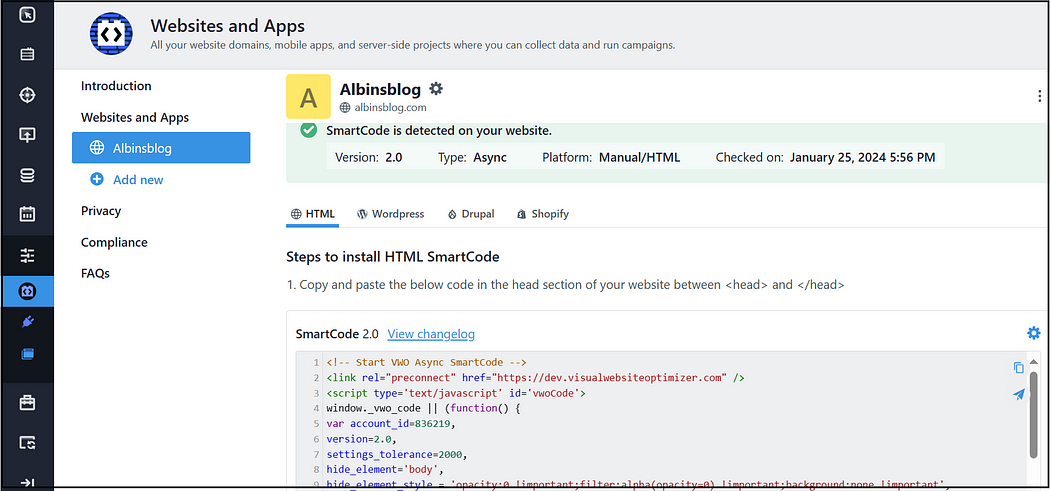
Attributes: Define visitor characteristics according to your requirements to visualize their unique identity. There will be standard attributes such as Visitor Language, Device Type, Location, Browser, Operating System, Landing Page URL, etc. You can also define custom attributes to segment your customers.
Events: Setup and track all visitor activities on your website. There will be standard events such as Screen Viewed, Page Visit, Click etc. You can also define custom attributes to capture visitor events.
Segments: Slice visitor data to understand behavior and create high-impact audience groups. There will be standard events such as Direct Traffic, Referral Traffic, Desktop Traffic, New Visitors, Returning Visitors. You can also define custom segments based the Attributes and Events.
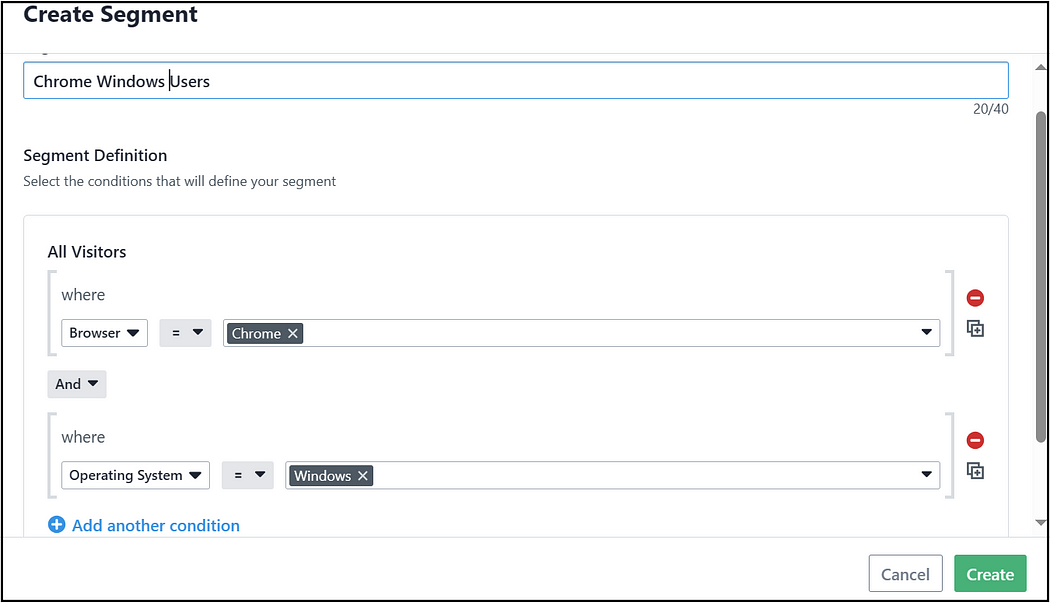
You will have the capability to integrate with external Analytics/CDP systems to import attributes and segments into the A/B testing tool.
Triggers: Setup when events, like campaigns will appear in visitor journeys. There will be standard triggers such as Page Visit, Session time > 60 seconds etc. You can also define custom triggers based on the events defined.
Metrics: Specific measurements or key performance indicators (KPIs) that are used to evaluate the performance of campaigns. Define metrics based on the events to measure the campaign success.
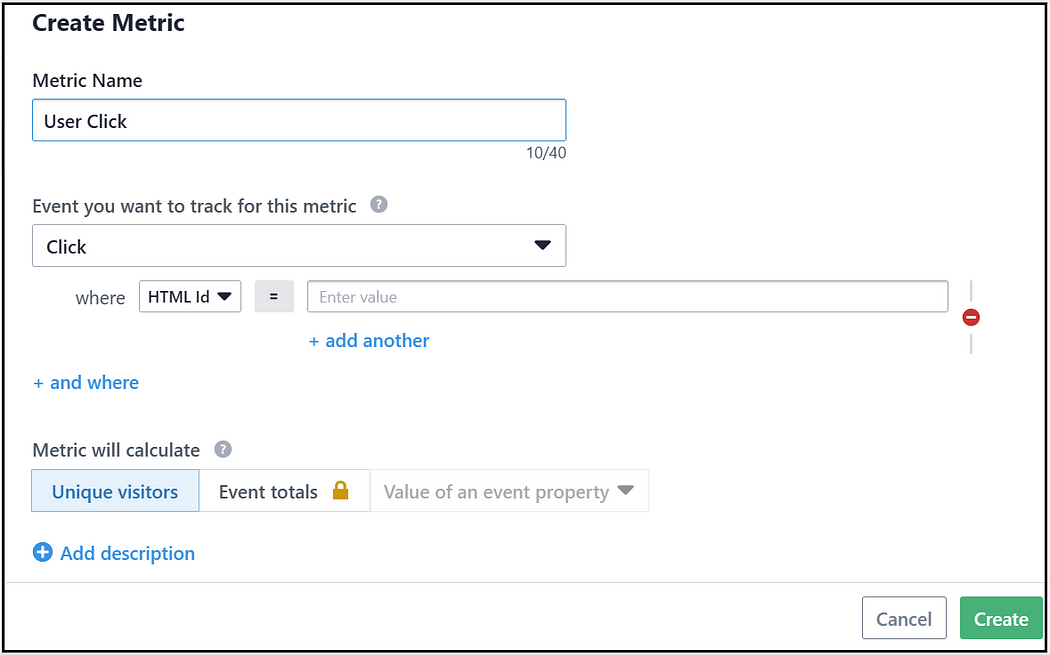
Let’s now quickly conduct an A/B test for a change on a page.
Create a A/B Test campaign.
Add the URLs you want to include in your A/B testing campaign.
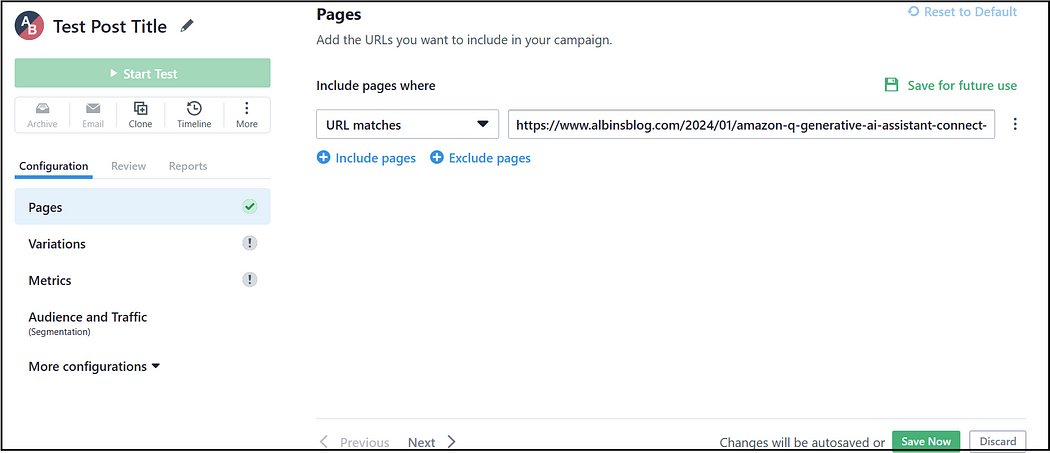
Create required variations, select the Traffic Split e.g Equal between base variation and other variations.
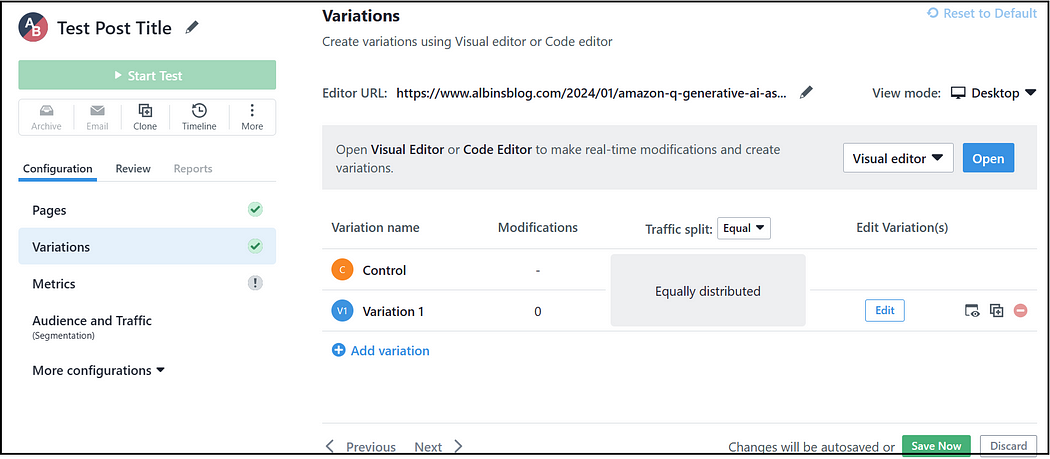
Edit the Variation through visual editor to enable the changes.
I am going to change the post Title on this variation through Edit Element option, you can perform other options too.
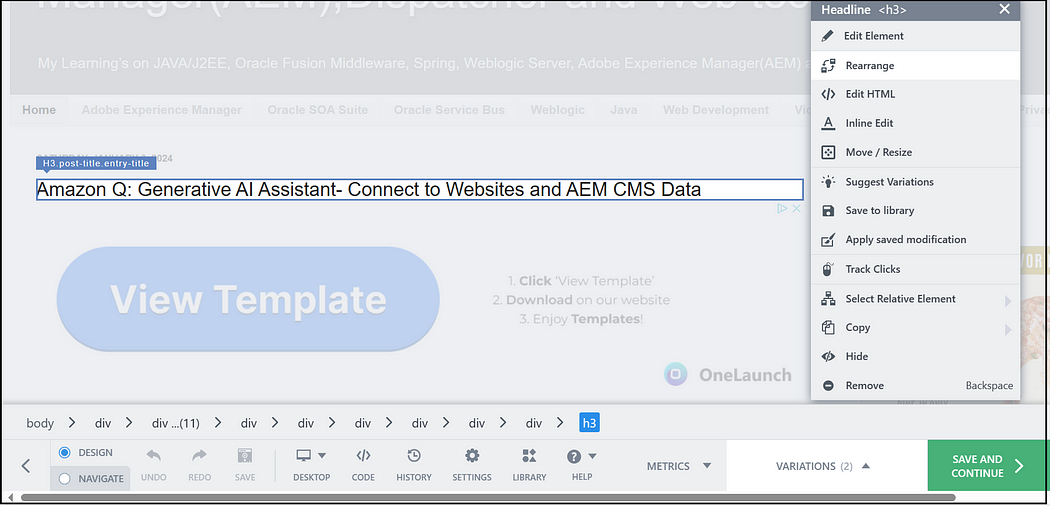

You can save section of the page as a reusable Widgets through “Save to Library Option.”
Additionally, you can apply standard widgets or elements, or use widgets saved by you, to modify the page’s user experience.
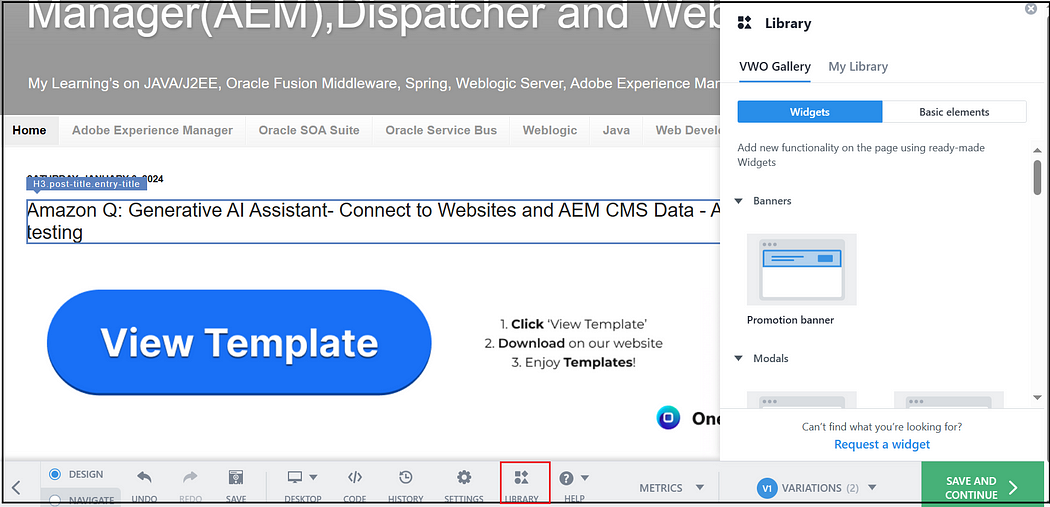
Save the variation changes.
Now add the metrics to the campaign, primary and secondary if required.
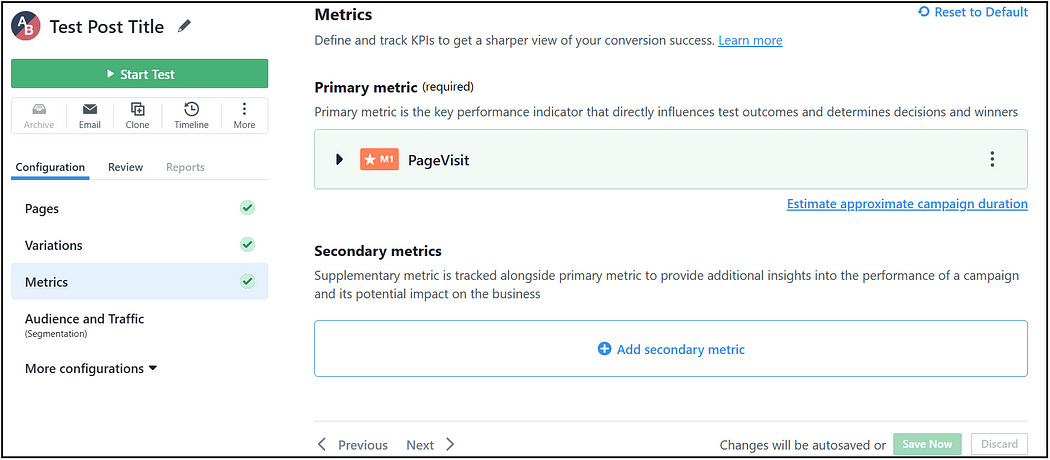
Now select the segment to run this test, also define the Traffic Allocation.
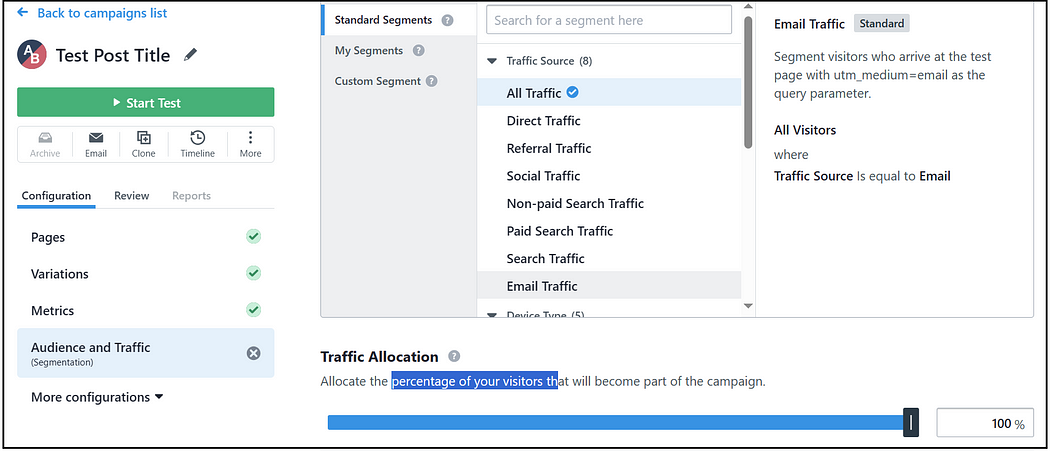
Additionally, you can define the Triggers, also Schedule to automatically start or pause the campaign, Manual Activation etc.
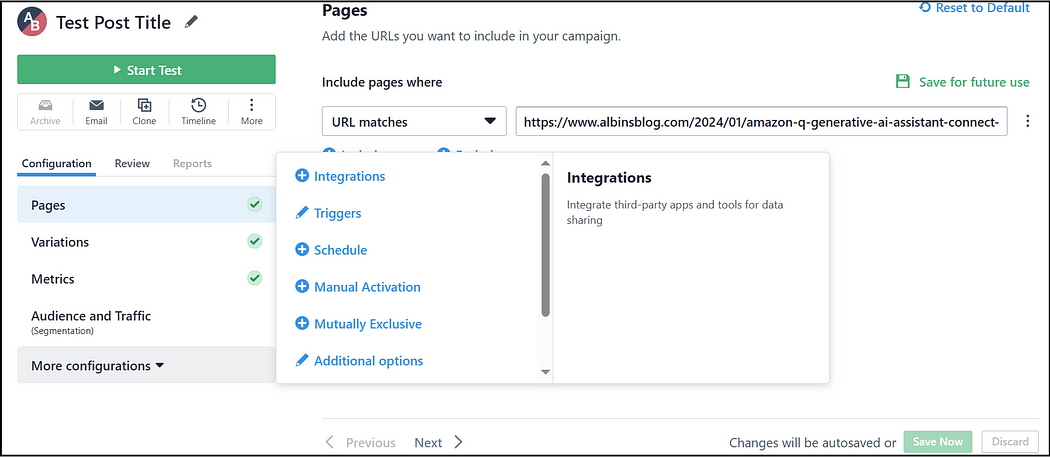
You will be able to preview the variations.
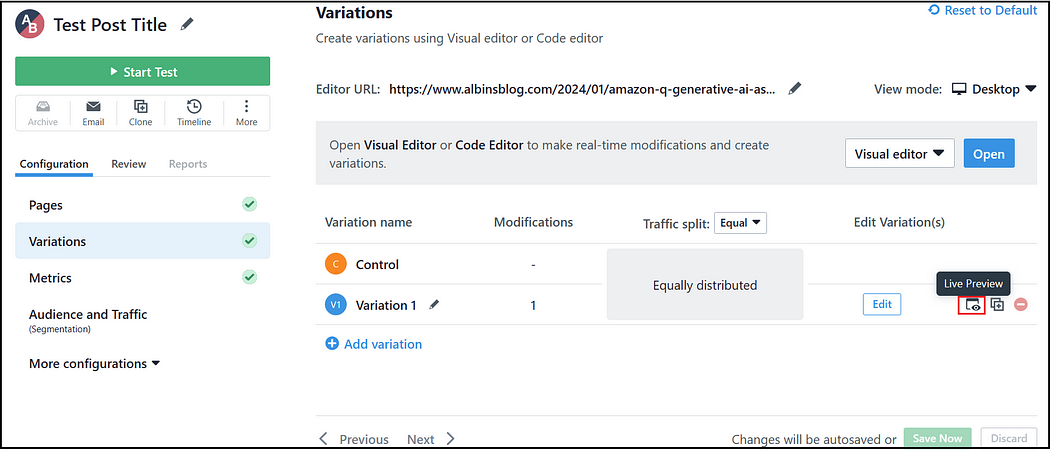
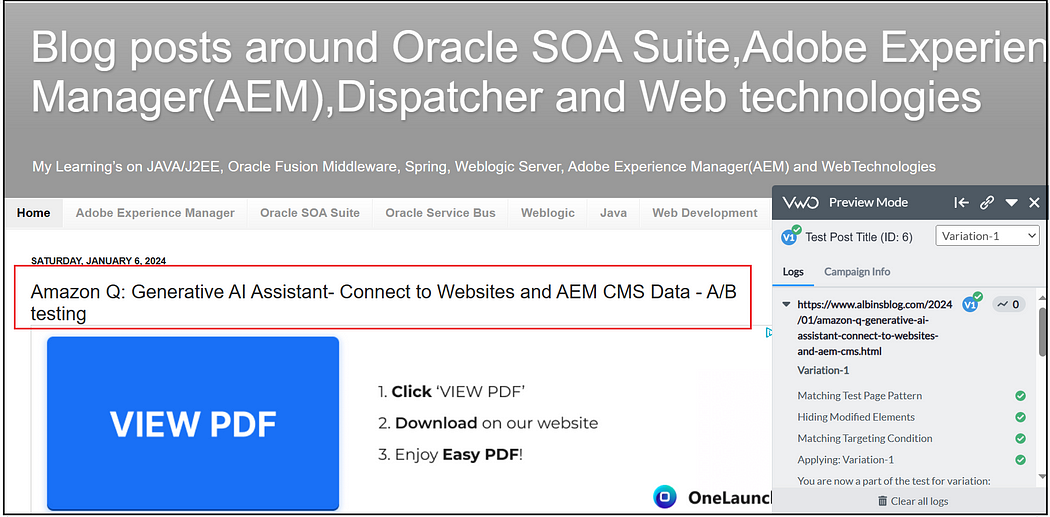
Now that the campaign is ready, you can start the test. As users access the page, they will be randomly switched between the base experience and the variation. Additionally, if needed, the campaign can be paused and resumed.
After reviewing the metrics, you should be able to roll out the winning variation to all customers.
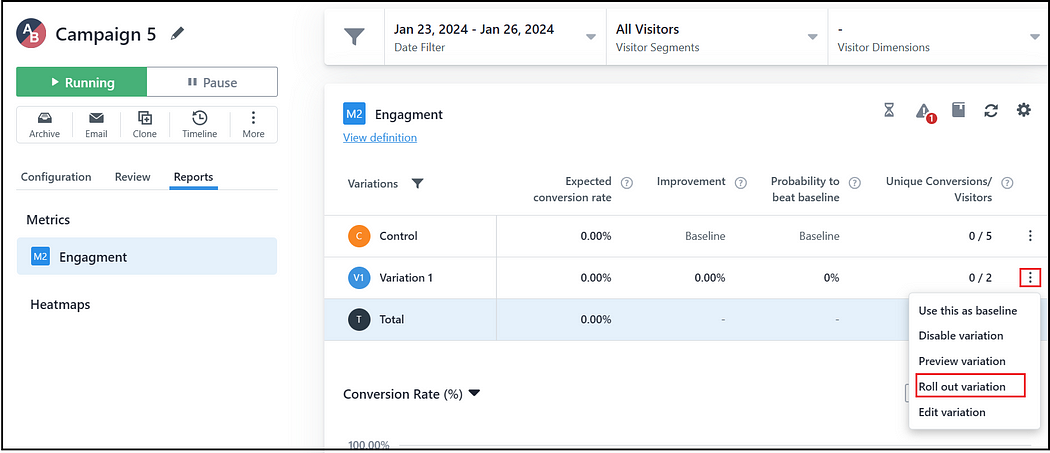
Same way you should be able to create test for Split URL or Multivariate testing.
Split URL: Split Testing or Split URL Testing is a website optimization process to test different variations of your website hosted on multiple URLs. This test takes two or more variants of a web page and divides your website traffic between them. It helps identify the best-performing variation based on your conversion goals. Split tests are suitable in case of major changes being made on a website e.g. Website layouts, Backend algorithms and etc. Avoid a split-URL test while making little modifications to the website, such as changing the color of the CTA, and headlines as this can cause lag in the variation owing to visitor redirection.
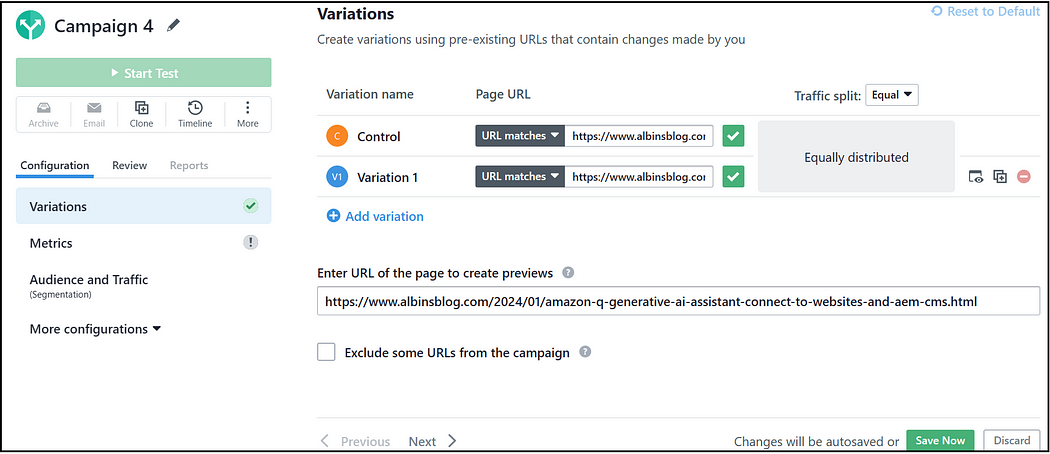
Multivariate: In multivariate testing, multiple elements of a webpage are modified & tested to determine which combination performs better. Although multivariate testing can be incredibly valuable, it’s not the right fit for every scenario. Sometimes, a simple A/B test is the best choice. However, if you want to test several variants, multivariate tests are a great way to pinpoint which winning combinations drive click-through rates (CTR), conversions, and revenue.
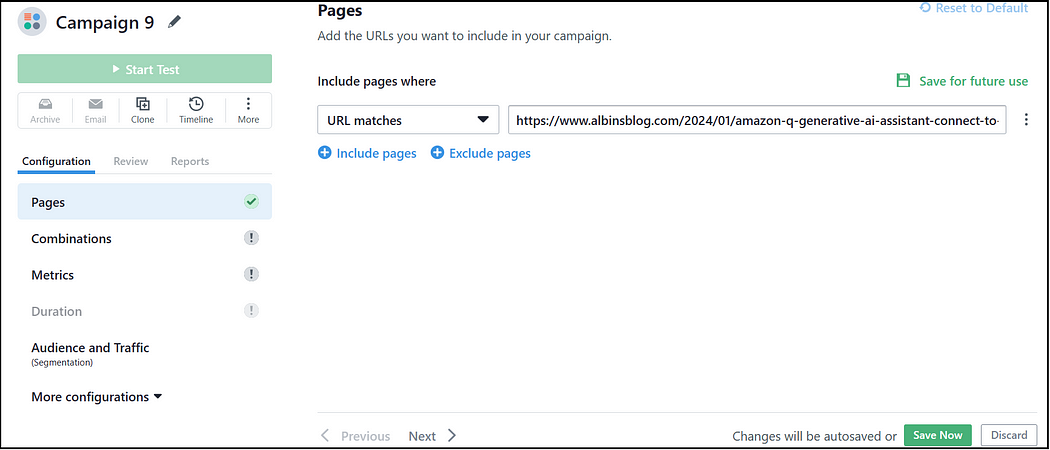
You can open the visual editor and enable the changes on different elements — tool creates multiple combinations from the permutations of changes made by you.
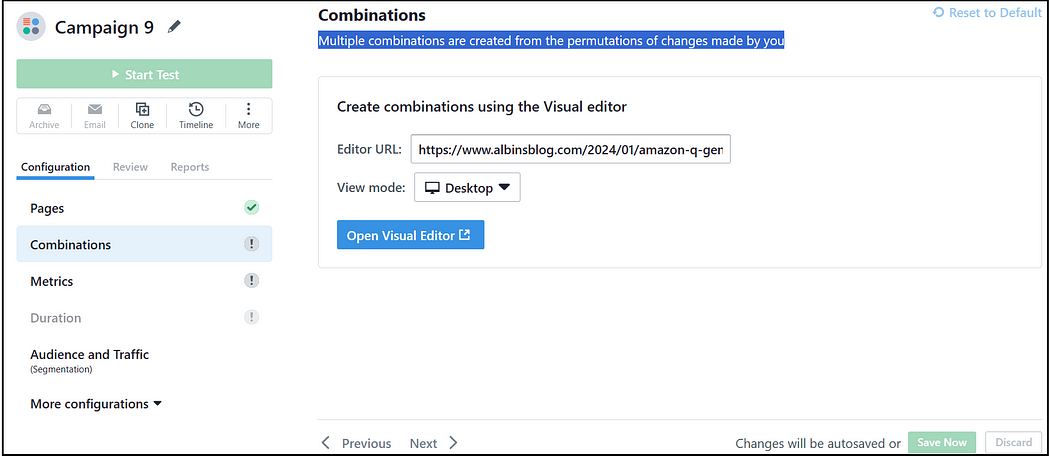
I made changes to three different elements, and the tool created various combinations to test variations of these changes.
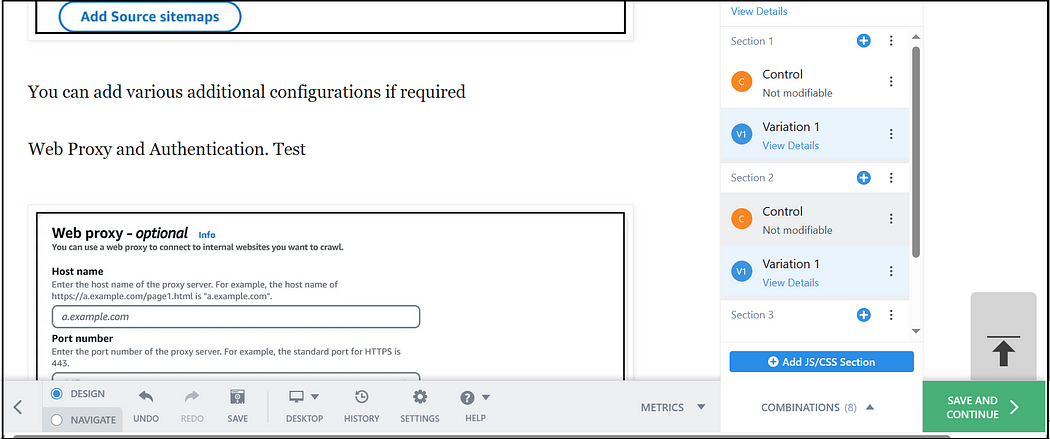
You can define other configurations and then start the campaign. The duration calculator identifies the estimated campaign duration based on the parameters configured.
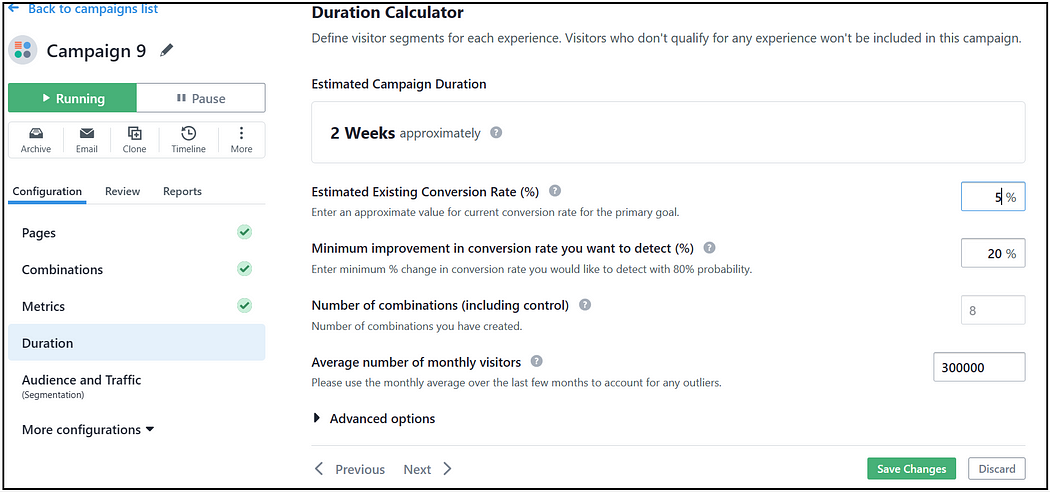
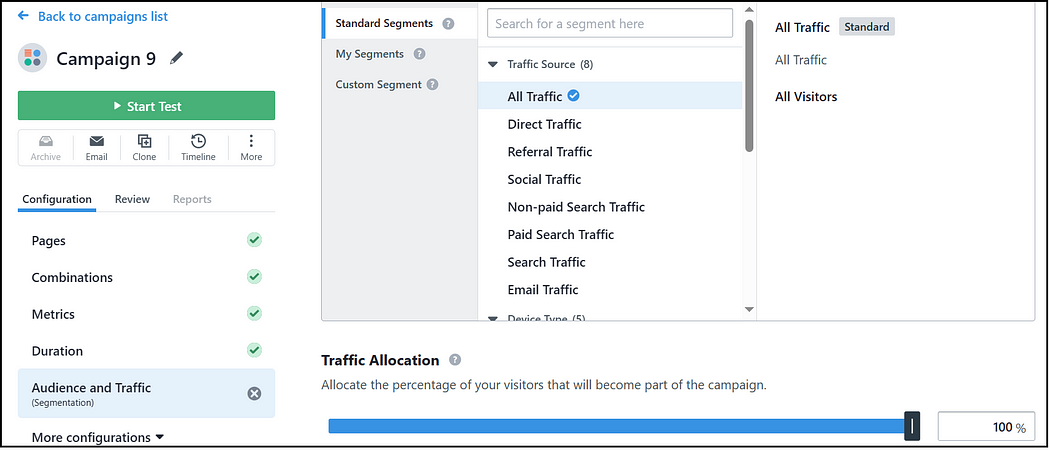
After you run your test, you need to analyze your results and implement changes. You should compare the performance of each combination against your goal and hypothesis. You should look for the combination that has the highest impact on your goal, such as the highest conversion rate, click-through rate, or revenue. Finally, you should implement the winning combination on your page and monitor the results.
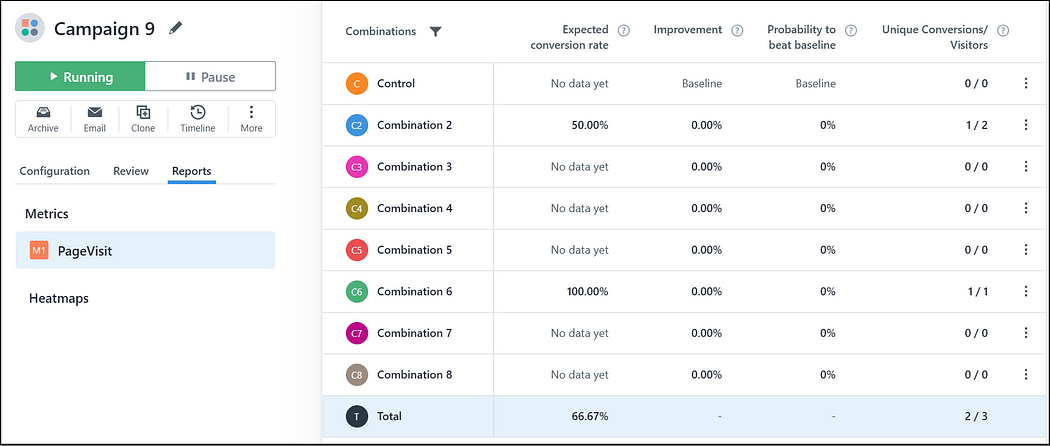
In conclusion, A/B Testing, Split URL Testing, and Multivariate Testing are powerful tools that empower website owners and marketers to make data-driven decisions for optimizing their online presence. A/B Testing allows you to compare two variations and choose the one that resonates best with your audience. Split URL Testing takes it a step further by evaluating entirely different web pages. Multivariate Testing explores multiple elements simultaneously to fine-tune your website’s performance.
By harnessing the insights gained from these testing methods, you can enhance user experience, boost conversion rates, and achieve your website goals more effectively. Remember, optimization is an ongoing process, and regularly testing and refining your website is key to staying competitive in the digital landscape. So, start testing, analyzing, and optimizing to unlock the full potential of your website and deliver an exceptional user experience.